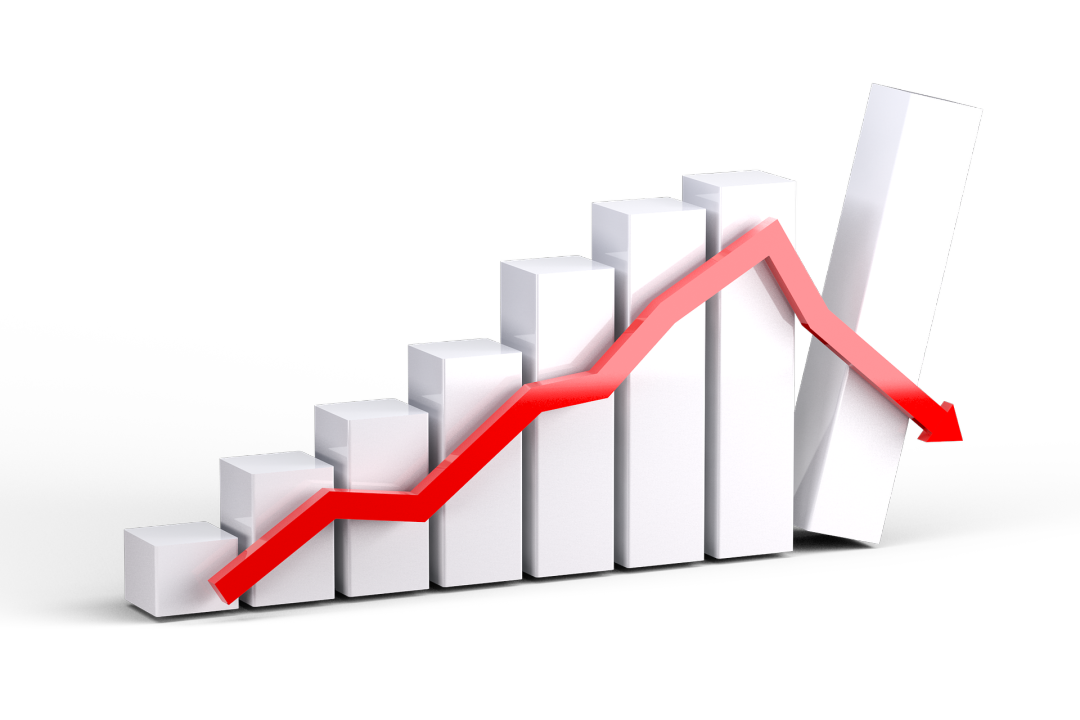Understanding Private Market Secondaries: Value in Pre-IPO Equity Opportunities

Key Takeaways
- Private market secondaries offer a distinctive way to make pre-IPO equity investments beyond the Series B round. This provides investors a unique opportunity to access tremendous growth potential ahead of these companies’ IPOs. This strategic entry can yield attractive valuations versus post-IPO valuations.
- In secondary stock sales, current shareholders, like employees or early investors, sell directly to new investors. This process allows for liquidity while preserving the capital structure of the company. Mastering these mechanics will position you to make informed and prudent investment decisions.
- Investing in pre-IPO equity allows exposure to innovative companies with the potential for significant market impact, often at lower valuations. Such investments help to strengthen and diversify a portfolio by adding assets that are less correlated with the traditional markets.
- To identify value in pre-IPO equity, investors should analyze company financials, evaluate market trends, assess management teams, and review competitive positioning. Considering potential exit strategies is key to understanding liquidity events.
- Private market secondaries are not without risks including illiquidity and valuation difficulties because of the lack of information. Therefore, investors need to do extensive due diligence and use risk management tactics to successfully avoid these pitfalls.
- To find value in private market secondaries, invest with a strategy backed by extensive research. Be opportunistic and diversify investments by sector and stage, and align yourself with seasoned advisors and professionals to leverage their expertise and networks.
Looking at private market secondaries can provide a new, innovative route to accessing pre-IPO equity opportunities. This space allows you to buy into shares of private companies prior to their initial public offerings (IPOs) – usually at a significant discount. For those of us focused on finding value, diversifying portfolios and uncovering growth before it gets on everyone’s radar, this is a can’t-miss space.
With a laser focus on strategic investment, navigating these markets can be profitable and illuminating. By combining first-hand expert knowledge with deep analytical capabilities, we are able to go beyond the surface-level sheen of these investments and understand the complexities.
As we navigate this new landscape, it’s hard to miss the need and potential benefit to recalibrating some of our financial plays. This provides a bevy of opportunities for savvy investors looking to cast a wider net.
What Are Private Market Secondaries?
Private market secondaries are a niche financial market. In this market, shares of private companies are exchanged before they go public. These transactions typically concern companies that have already exited their Series B financing.
This progression illustrates their track record of reaching a high level of maturity and resilience. This stage provides investors with an important tactical benefit. They can then buy those shares at valuations that are typically much more attractive than what is available post company’s IPO.
Employees and other early stage investors who are current shareholders are a key part of these transactions. Unlike an IPO, when insiders get liquidity by selling their shares, this is done without diluting the company’s capital.
Definition and Explanation
In the secondary market, stock sale transactions are primarily concerned with the transfer of shares. Existing holders sell their shares to new investors. Sellers frequently include employees and early stage investors who are looking for liquidity.
This approach is different from primary market offerings, where new shares are created. Having a clear understanding of these mechanics is critical for making smart investment decisions in this exciting, new asset class.
Private secondaries allow early investors to cash out on their investments prior to an IPO. This process often takes a few weeks to a few months. Employees, on average, could end up with 47% less than the IPO valuation.
Importance in Pre-IPO Investments
Private market secondaries are an important bridge point to gain exposure to the most high-growth startups just prior to their going public. They provide the opportunity to find highly discounted, mispriced private companies likely to exceed expectations in public markets.
For early stage investors and employees, it offers an important exit strategy, and accredited investors have the opportunity to access one-of-a-kind opportunities. The market today has more than $50 billion trapped in pre-IPO companies.
This change is creating new opportunities for both institutions and individuals who have historically been locked out by high investment minimums.
Why Invest in Pre-IPO Equity?
Pre-IPO equity investing allows you to directly invest in the world’s most forward-thinking companies. These innovative companies are sure to make a major impact on the market! Sectors such as technology and healthcare, known for their explosive growth, offer the best opportunities for secondary investments.
Companies that can implement highly disruptive business models can achieve vast majorities of the addressable market. Partnering from an early stage with these future industry leaders can create amazing opportunities. So, stay tuned for what else is coming down the pipeline. Through venture capital, you can discover exciting pre-IPO opportunities that are poised to revolutionize a generation, just as Airbnb, Uber, and Robinhood did in the secondary markets.
The return upside from investing in pre-IPOs is immense. Early investors in companies such as Facebook and Uber were rewarded handsomely. Their success points to the huge returns to be found versus public equity markets, illustrating the potential of secondary stock sales.
Market timing, particularly with respect to IPO windows, can have a substantial impact. Comprehending the risk-reward dynamic is the key. The opportunity to save as much as 31% in taxes through a pre-IPO share sale further sweetens the deal.
From a diversification standpoint, pre-IPO equity investments can lower overall portfolio risk by adding exposure to non-correlated assets. This strategy serves to stabilize returns across more traditional asset classes, making secondary market investing particularly appealing.
Creating a robust strategy that incorporates companies at multiple stages of growth can deepen the effects of portfolio diversification. Prioritizing sectors with a high potential for growth and innovation is key for investors looking to deploy pre-IPO equity.
Both technology and healthcare are perennial leaders in innovation, providing a wealth of opportunities for smart investors. Companies with highly disruptive business models are especially alluring, as they often have the potential to capture huge share of a market.
For the astute early investor, it provides a unique opportunity to get in on the ground floor of the next big industry leader. That’s why keeping an eye on emerging trends is so crucial to finding these high-potential pre-IPO equity opportunities.
Pre-IPO investments are well-known for their ability to provide double or triple returns compared to public equity markets. Look no further than historical precedents, such as the early investments in Facebook and Uber, which have produced record returns.
Most important is the timing of these investments, particularly relative to IPO events, which often determines the outcome. It’s important to understand and appreciate the risk-reward profile, and the potential for outsized returns can be one of the most enticing parts of investing in pre-IPO equity.
Adding pre-IPO equity to a portfolio can be an effective way to lower overall risk through diversification. These investments provide a powerful counterweight to traditional asset classes by adding non-correlated assets.
The private markets have a relatively low correlation to the broader financial markets, adding to the value of having pre-IPO shares in the mix. A diversified strategy that includes multiple stages of company growth can help maximize the stability and resilience of a portfolio.
Methods to Identify Value in Pre-IPO Equity
In weighing investment opportunities in pre-IPO companies, investors must look closely at five critical factors to make the best decisions possible.
Here’s a bullet list of what to look into:
- Analyze company financials, including revenue growth and profitability.
- Evaluate market trends to understand the competitive landscape.
- Assess management teams for experience and track record.
- Review competitive positioning to gauge market advantages.
- Consider exit strategies to understand potential liquidity events.
1. Analyze Company Financials
Analyzing a company’s financials is critical to ensuring a company is effectively scaling revenue growth and managing costs.
Learn more about cash flow and burn rates, an important topic for early-stage companies. Together, these four metrics offer a window into a company’s potential sustainability and profitability in the long run.
Financial metrics tend to be good predictors of future performance, which is why they’re crucial to use in analyzing an investment.
2. Evaluate Market Trends
Knowing the trends in the industry you’re investing in is crucial to gauging the potential growth of any company.
Stay up to date with technological innovations and regulatory developments, as these can both dramatically impact market dynamics.
Macroeconomic factors are a huge swing factor as well. Industry reports and trade publications can provide valuable strategic insight.
3. Assess Management Teams
Strong leadership is key to success.
Scrutinize the backgrounds and experiences of executives and directors. Their vision, and more importantly the execution ability to follow through, are key.
Control management to maximize shareholder value.
4. Review Competitive Positioning
Analyze market share and competitive edge.
Identify unique selling propositions and barriers to entry. Assess adaptability and customer loyalty.
Brand strength further defines market positioning.
5. Consider Exit Strategies
Exit strategies are key considerations for pre-IPO investments.
Test acquisition liquidity cases or IPO exit runs. Market conditions have a dramatic effect on exit opportunities.
Account for liquidity preferences of investors.
Risks of Investing in Private Market Secondaries
Illiquidity Concerns
When investing in private market secondaries, one major risk to consider is illiquidity. These investments tend to have less flexibility than public equities, with the greater challenge being the ability for investors to quickly sell shares. The lack of a liquid market leads investors to have to wait for certain liquidity events, such as IPOs, to see any return.
Closed-end funds are different from mutual funds in that they do not permit daily shareholder redemption at net asset value. This limitation is a double whammy that further reduces liquidity. Investors should understand that they need to prepare for increased hold times.
Additionally, they should consider diversifying their portfolios in a way that allows them to manage their liquidity needs.

Valuation Challenges
Valuing private companies is inherently tricky, because they must rely on projections and other forward-looking assumptions, which are inherently uncertain. Without the daily feedback loop of public market investors, private firms may have larger gaps between what they think they’re worth and what they’re actually worth.
Knowing the right market comparables and precedent transactions is critical to deriving proper valuations. As an illustration, single-asset transactions consist of complex negotiations across numerous stakeholders that can take months to complete.
Investors need to be careful with their assumptions on valuations. They need to know that investment fund values may vary as a result of market movements.
Limited Information Availability
Private companies tend to be less transparent than their public counterparts, making it difficult to find robust data. This lack of visibility necessitates a deep due diligence process, even with information sometimes limited.
Additionally, investors can benefit from leveraging trusted networks and platforms as sources of research, intelligence, and insight. As a share of GP-led secondaries, single-asset continuation funds made up 44% in 2021.
This trend underscores the need to do more research and make deliberate choices. Deepening relationships with well-informed insiders can reveal hard-to-find insights, going a long way toward reducing risks inherent in the lack of available data.
Benefits of Investing in Private Market Secondaries
Access to Exclusive Opportunities
By investing in private market secondaries, we gain access to rare and compelling opportunities that don’t exist in public markets. It’s not just about access — it’s about access to deals that are off-limits to the average investor.
Private equity platforms like EquityZen are a key part of the equation here, allowing everyday investors to access these exclusive pre-IPO investments. They serve as equalizers, leveling the playing field by opening up access to investments that are usually only available to those with the best connections.
Speaking of networking, it’s a must. Those relationships can lead to investments that would otherwise be missed. Dive into specialized platforms to access unique investment opportunities. This shift can make a meaningful expansion to your portfolio, offering both diversity and exclusivity to your investments.
Potential for Early Investment Gains
The appeal of getting in early on promising high growth companies is irresistible. Getting in early with a company before it lists and enters the public spotlight can be hugely rewarding.
While the company moves toward its IPO, you can profit from rising valuations. If the company continues to do well after going public, these returns can be tremendous.
It’s about playing the long game, looking at the company’s potential for growth instead of going for the low-hanging fruit. This high-risk, high-reward strategy makes early investment a compelling play for investors with a long-term perspective.
Reduced Volatility Compared to Public Markets
Private market investments are associated with lower volatility relative to their public market equivalents. Compared to public equities, private investments are insulated from daily market fluctuations, providing a less volatile investment vehicle.
Investing in more mature private companies brings an added layer of stability, giving investors a cushion from the volatility of public markets. This long-term nature of private investments meshes perfectly with investors who want to weather the ups and downs of the market with a little less volatility.
It’s an attractive feature for investors looking for a smoother investment journey.
Best Practices for Investing in Private Market Secondaries
It takes skill, a discerning eye, and a measured approach to be successful in secondary market investing in private market secondaries. Here are some best practices to consider.
- Conduct thorough due diligence on potential investments.
- Diversify your investment portfolio to mitigate risks.
- Engage advisors with extensive experience in private markets to help you navigate these complexities and identify attractive opportunities.
Conduct Thorough Due Diligence
The detailed research provides the foundation for smart investment decisions. Consider all parts of the company, from its financial condition to its management team to its position in the competitive landscape.
By doing so, you’ll be able to uncover critical information that will gauge its potential. Regular tracking after acquisition helps ensure you can be proactive should your investment trend in the wrong direction.
Using third-party resources deepens your analysis, providing a 30,000-foot view on the investment landscape. Tools like EquityZen offer in-depth analyses that help investors get a clearer picture of a company’s prospects.
Diversify Investment Portfolio
Diversification is crucial for risk management, with investments spanning multiple sectors and stages. By looking at a combination of pre-IPO and public investments, you’re getting exposure that is much more balanced, and can potentially smooth out that volatility.
Investing in this way creates a safety net for overall long-term financial success, even as some individual investments may fail. Though complicated, pre-IPO investments can help round out more basic traditional assets, providing a unique risk-reward profile.
Partner with Experienced Advisors
The benefits of working in tandem with specialists in private market investing are immense. These advisors are indispensable in helping navigate these often murky regulatory and compliance waters.
As mentioned above, they open the doors to exclusive investment opportunities through their deep networks. Their guidance provides the clarity needed to align your investments with your personal objectives, so your strategies work to support your financial aspirations.
Conclusion
Taking a closer look at private market secondaries can lead to a wealth of alternate investment opportunities. You plunge into the exhilarating realm of pre-IPO equity, where lucrative possibilities intersect with calculated strategy. For private market investors, the secondaries present a rare chance to get into companies on the cusp of going public. First, you can usually get these investments at a better valuation. With a deep understanding of the landscape, you’ll be able to identify these hidden gems and make well-informed investment decisions. Though risks are present, the potential rewards are great with thoughtful due diligence and informed foresight. It’s no longer just about what we know, but about what we do. Whether you’re a seasoned investor or new to the game, pre-IPO opportunities can add a dynamic edge to your portfolio. Dive into the platform today and discover the opportunities that private market secondaries can offer.
Frequently Asked Questions
What Are Private Market Secondaries?
Private market secondaries are the practice of buying and selling pre-existing shares in private companies. This usually happens while the company is still private. They allow early investors and employees to cash out some portion of their holdings.
Why Invest in Pre-IPO Equity?
Investing in pre-IPO equity can yield life-changing returns. You obtain early access to the most promising companies. This can provide attractive upside when the company eventually IPOs.
How Can I Identify Value in Pre-IPO Equity?
Look for companies with strong growth potential in the secondary market. Analyze market trends and financial health to inform your investment strategy.
What Are the Risks of Investing in Private Market Secondaries?
Risks in secondary market investing involve a lack of liquidity and failure to inform. Pending market conditions can cause dramatic shifts in valuations, and there is also the risk that the company won’t go public as expected.
What Are the Benefits of Investing in Private Market Secondaries?
They provide access to potentially high returns and portfolio diversification. Through secondary market investing, you can invest in other high-growth companies well before their IPO stock offerings. This gives you the opportunity to get in earlier in the growth stage.
What Are the Best Practices for Investing in Private Market Secondaries?
Make sure to do your due diligence in secondary market investing. Get to know the company, the competitive landscape, and financial picture to enhance your investment strategy.
Is Pre-IPO Equity Suitable for Every Investor?
Not if you know where to look in the secondary markets. It’s only appropriate for sophisticated investors who can bear the risks. First, you must have a high-risk tolerance and the capacity to evaluate private company valuations.
 Send Buck a voice message!
Send Buck a voice message!




